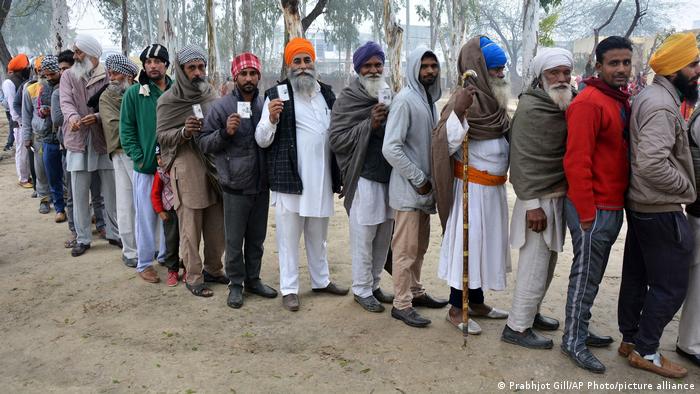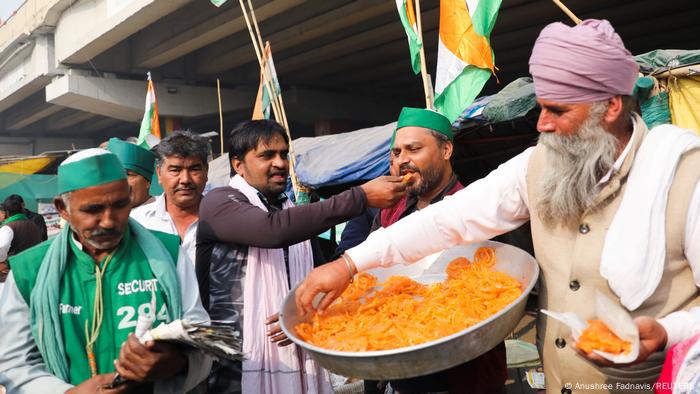Fri, 18 February 2022

Storm Eunice killed at least seven people in Europe on Friday, pummelling Britain with record-breaking winds and forcing millions to take shelter as it disrupted flights, trains and ferries across Western Europe.
London was eerily empty after the British capital was placed under its first ever "red" weather warning, meaning there is "danger to life". By nightfall, police there said a woman in her 30s had died after a tree fell on a car she was a passenger in.
Meanwhile a man in his 50s was also killed in northwest England after debris struck the windscreen of a vehicle he was travelling in, according to Merseyside Police.
Beyond Britain, falling trees killed three people in the Netherlands and a man in his 60s in southeast Ireland, while a Canadian man aged 79 died in Belgium, according to officials in each country.
As well as in London, the highest weather alert level was declared across southern England, South Wales and the Netherlands, with many schools closed and rail travel paralysed, as towering waves breached sea walls along the coasts.
Meanwhile Eunice's winds knocked out power to more than 140,000 homes in England, mostly in the southwest, and 80,000 properties in Ireland, utility companies said.
Around the UK capital, three people were taken to hospital after suffering injuries in the storm, and a large section of the roof on the capital's Millennium Dome was shredded by the gales.
One wind gust of 122 miles (196 kilometres) per hour was measured on the Isle of Wight off southern England, "provisionally the highest gust ever recorded in England", the Met Office said.
At the Tan Hill Inn, Britain's highest pub in Yorkshire, staff were busy preparing even if the winds remained merely blustery in the region of northern England.
"But with the snow coming in now, the wind's increasing, we're battening down the hatches, getting ready for a bad day and worse night," pub maintenance worker Angus Leslie told AFP.
'Sting jet'
Scientists said the Atlantic storm's tail could pack a "sting jet", a rarely seen meteorological phenomenon that brought havoc to Britain and northern France in the "Great Storm" of 1987.
Eunice caused high waves to batter the Brittany coast in northwest France, while Belgium, Denmark and Sweden all issued weather warnings. Long-distance and regional trains were halted in northern Germany.
Ferries across the Channel, the world's busiest shipping lane, were suspended, before the English port of Dover reopened in the late afternoon.
Hundreds of flights were cancelled or delayed at London's Heathrow and Gatwick airports and Schiphol in Amsterdam. One easyJet flight from Bordeaux endured two aborted landings at Gatwick – which saw wind gusts peak at 78 miles per hour – before being forced to return to the French city.
Prime Minister Boris Johnson, who has placed the British army on standby, tweeted: "We should all follow the advice and take precautions to keep safe."
Environment Agency official Roy Stokes warned weather watchers and amateur photographers against heading to Britain's southern coastline in search of dramatic footage, calling it "probably the most stupid thing you can do".
Climate impact?
London's rush-hour streets, where activity has been slowly returning to pre-pandemic levels, were virtually deserted as many heeded government advice to stay home.
Trains into the capital were already running limited services during the morning commute, with speed limits in place, before seven rail operators in England suspended all operations.
The London Fire Brigade declared a "major incident" after taking 550 emergency calls in just over two hours – although it complained that several were "unhelpful", including one from a resident complaining about a neighbour's garden trampoline blowing around.
The RAC breakdown service said it was receiving unusually low numbers of callouts on Britain's main roads, indicating that motorists are "taking the weather warnings seriously and not setting out".
The storm forced Prince Charles, the heir to the throne, to postpone a trip to South Wales on Friday "in the interests of public safety", his office said Thursday.
Another storm, Dudley, had caused transport disruption and power outages when it hit Britain on Wednesday, although damage was not widespread.
Experts said the frequency and intensity of the storms could not be linked necessarily to climate change.
But Richard Allan, professor of climate science at the University of Reading, said a heating planet was leading to more intense rainfall and higher sea levels.
Therefore, he said, "flooding from coastal storm surges and prolonged deluges will worsen still further when these rare, explosive storms hit us in a warmer world".
(AFP)
'It's always beautiful to see the sea raging'
By Jitendra JOSHI
02/19/22 AT
Emergency crews Saturday battled to restore power to more than one million homes and businesses after Storm Eunice carved a deadly trail across Europe and left transport networks in disarray.
At least 13 people were killed on Friday by falling trees, flying debris and high winds in Britain, Ireland, the Netherlands, Belgium, Germany and Poland, emergency services said.
Train operators in Britain urged people not to travel, with trees still blocking several lines after most of the network was shut down when Eunice brought the strongest wind gust ever recorded in England -- 122 miles (196 kilometres) per hour.
In Brentwood, east of London, a 400-year-old tree crashed into a house and bedroom where 23-year-old Sven Good was working from home, as millions of other Britons heeded government advice to stay indoors.
Good said he heard a "creak and then a massive bang and the whole house just shuddered".
"I could feel the whole roof going above me. It was absolutely terrifying," he told Sky News, adding that none of the occupants was injured.

The train network in the Netherlands was also paralysed, with no Eurostar and Thalys international services running from Britain and France after damage to overhead power lines.
France was grappling too with rail disruption and about 37,000 households were without electricity, while some 8,000 remained cut off in Ireland and 4,500 in Germany, where rail operator Deutsche Bahn said "more than 1,000 kilometres" (620 miles) of track had suffered damage.
Poland still had one million customers cut off on Saturday afternoon, officials said, after the country's northwest took a battering.

"I appeal to you: please stay at home!" Polish Prime Minister Mateusz Morawiecki said in a Facebook post.
"We are constantly monitoring the situation and the appropriate services are at work. The fire brigade has already intervened more than 12,000 times," he said.
In the UK, 226,000 homes and businesses remained without power after 1.2 million others were reconnected.

Eunice sparked the first-ever "red" weather warning for London on Friday. It was one of the most powerful tempests in Europe since the "Great Storm" hit Britain and northern France in 1987.
Scientists said both storms packed a "sting jet", a rarely seen meteorological phenomenon borne out of an unusual confluence of pressure systems in the Atlantic that magnified the effects of Eunice.
The Met Office, Britain's meteorological service, on Saturday issued a less-severe "yellow" wind warning for much of the south coast of England and South Wales, which it said "could hamper recovery efforts from Storm Eunice".
The UK's total bill for damage could exceed ?300 million ($410 million, 360 million euros), according to the Association of British Insurers, based on repairs from previous storms.
At the storm's height, planes struggled to land in ferocious winds, as documented by the YouTube channel Big Jet TV which attracted more than 200,000 people to its live feed from near a runway at London's Heathrow airport.
Hundreds of other flights were cancelled or delayed at Heathrow and Gatwick, and Schiphol in Amsterdam.
A section of the roof on London's O2 Arena was shredded, and the spire of a church in the historic city of Wells, southwest England, toppled over.
Ferries across the Channel, the world's busiest shipping lane, were suspended, before the English port of Dover reopened Friday afternoon.
Experts said the frequency and intensity of the storms could not be linked necessarily to climate change.
Therefore, he said, "flooding from coastal storm surges and prolonged deluges will worsen still further when these rare, explosive storms hit us in a warmer world".



























